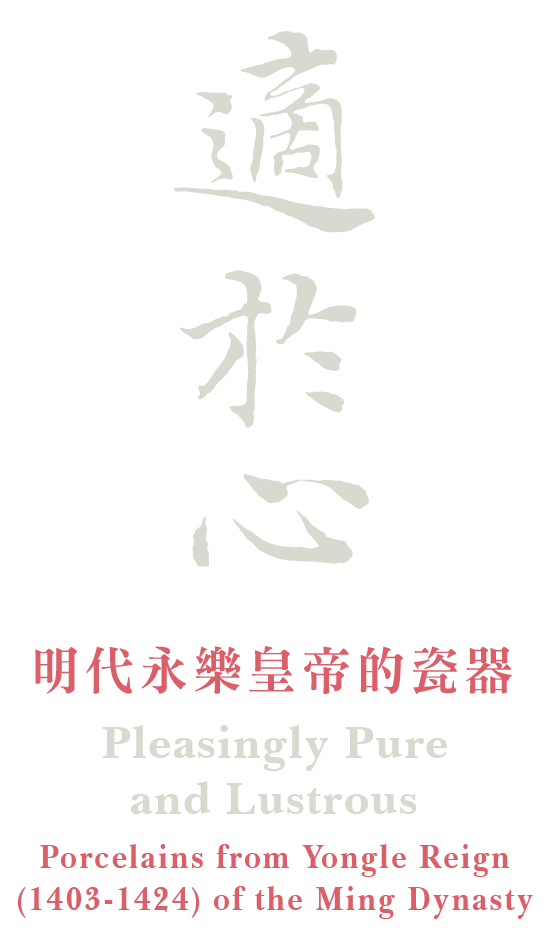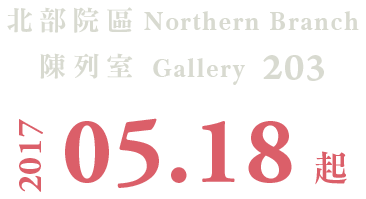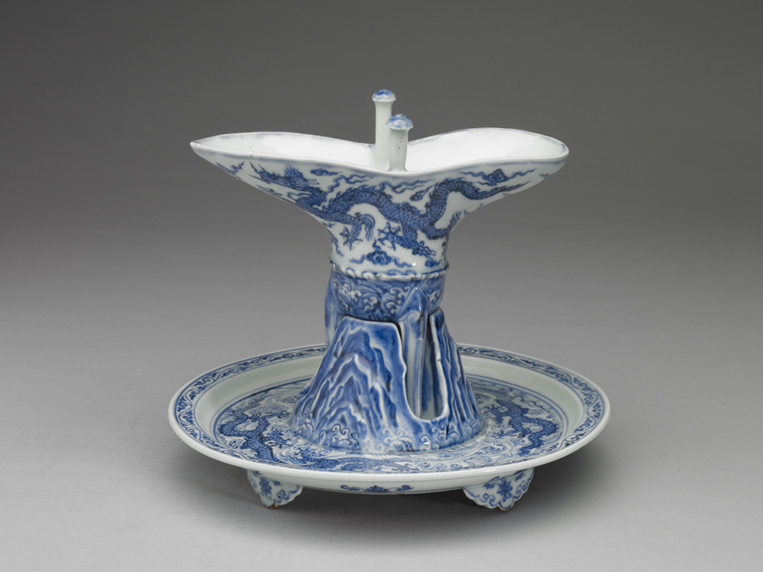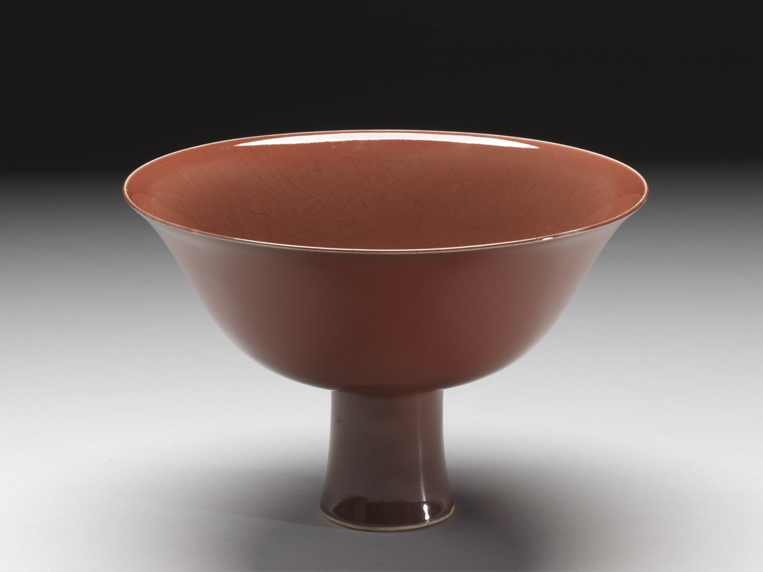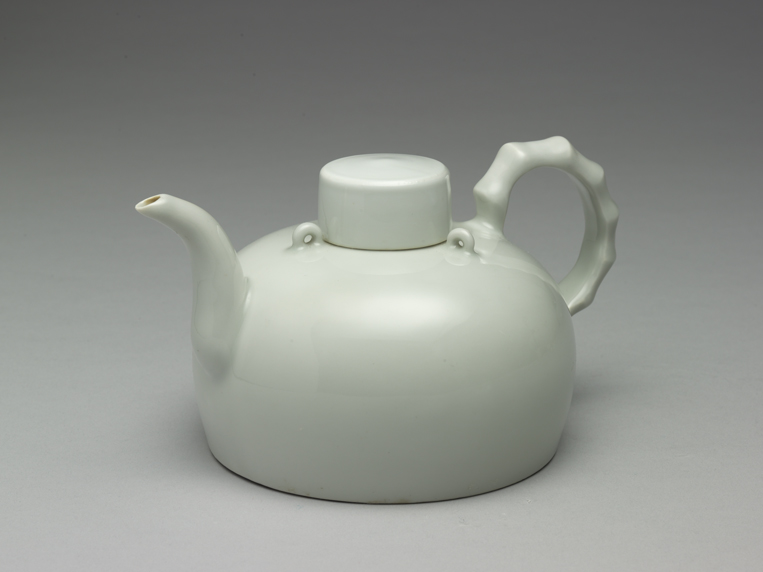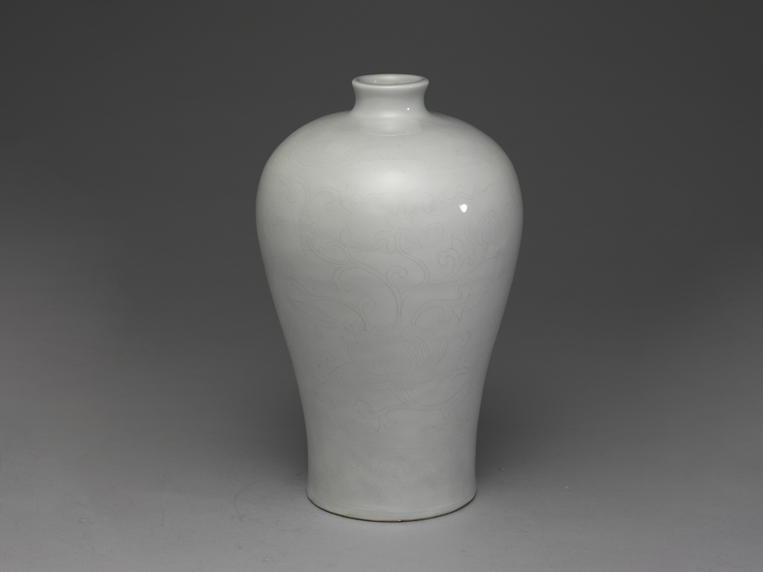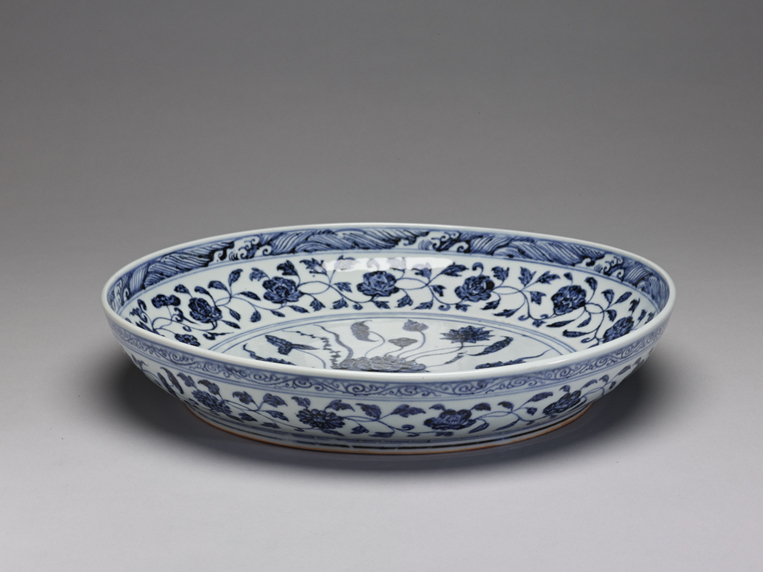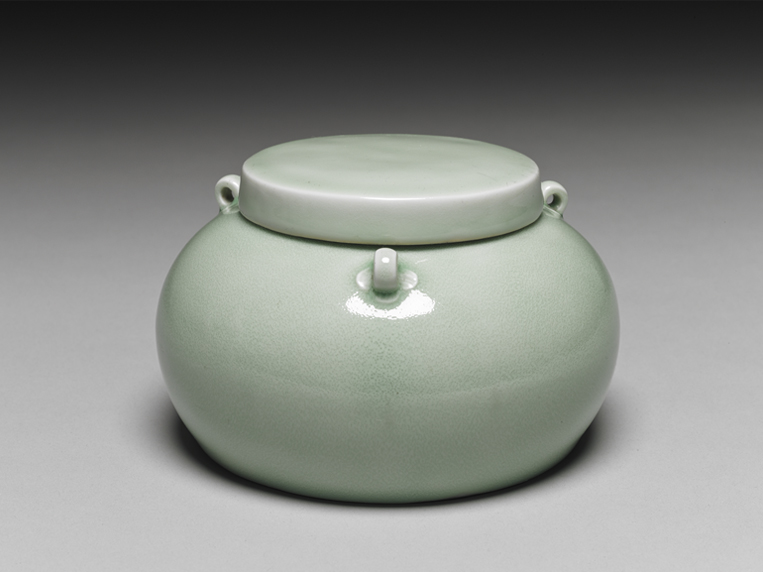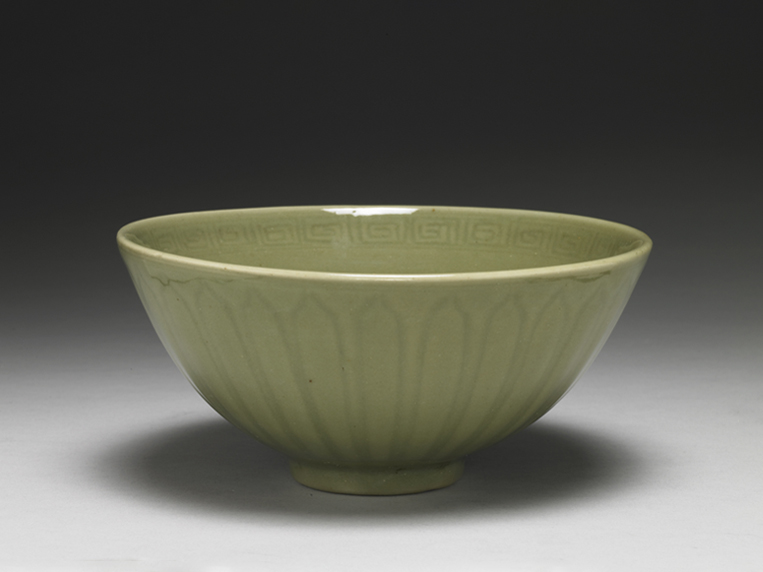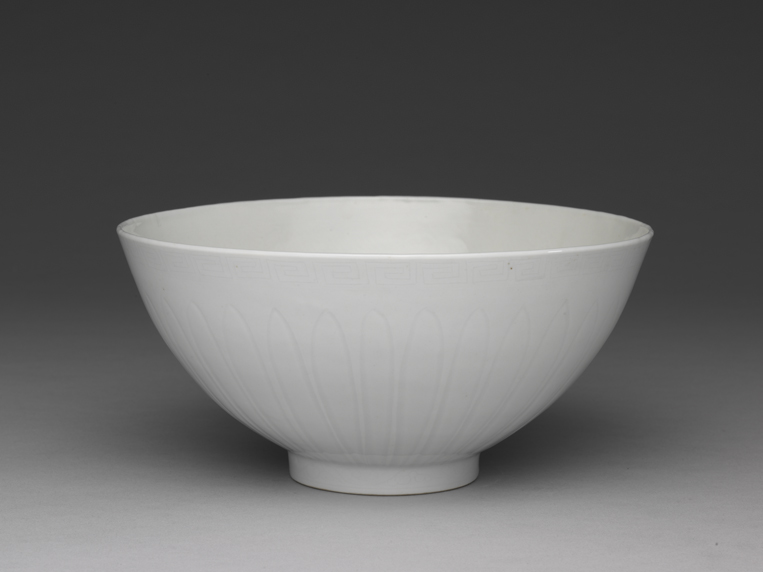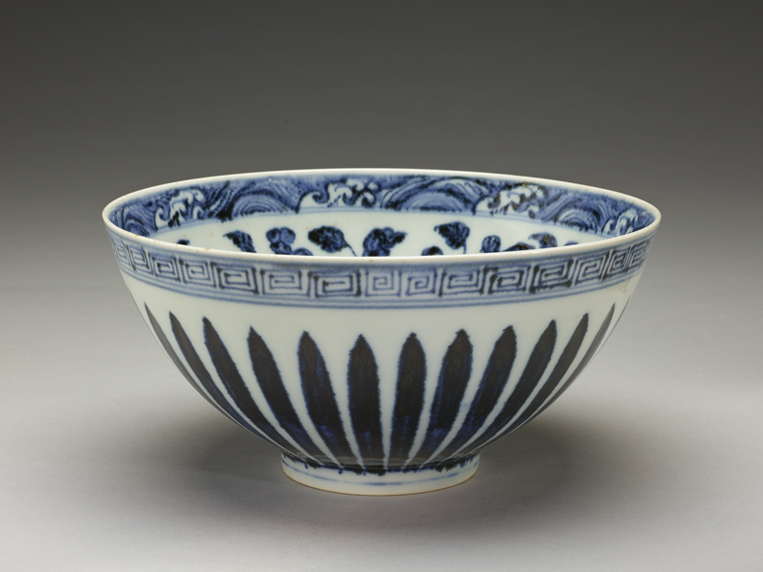In the late Ming dynasty, literati writing about official early Ming porcelains stated that, “Works fired for the court in the Yongle and Xuande reigns are even now precious. At that time, ‘bristle hole’ sweet-white glaze was common, decoration done with cobalt-blue, and bright-red glaze precious.” This passage clearly summarizes the character, appearance, and unique features of Yongle porcelains. Fired at the Jingdezhen kilns were “meiping” vases with the “neifu” (“imperial household”) mark, “jue” wine cups and accompanying saucers, and other porcelains with dragon and phoenix patterns. It shows that Yongle porcelains were fired and used for official purposes. Thus, the three most eye-catching types of porcelain fired in the Yongle reign were those with precious red glaze and the mark “Made in the Yongle reign,” with sweet-white glaze of lustrous purity and delicately incised patterns, and with underglaze-blue painted in cobalt “smalt blue.” Together with the pure monochrome hues of porcelains and celadons in the same official forms and designs from the Longquan kilns, they stand for the unique appearance and style of porcelains that emerged under the Yongle emperor.
